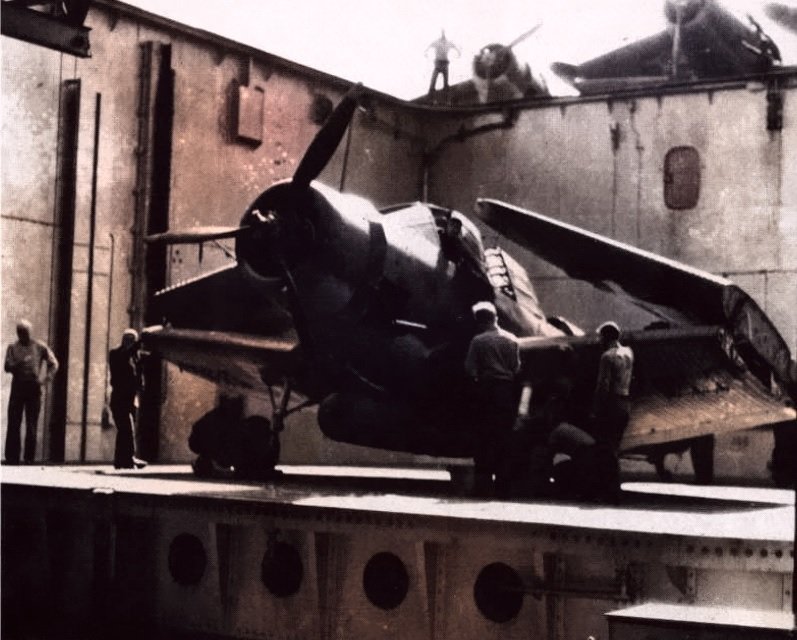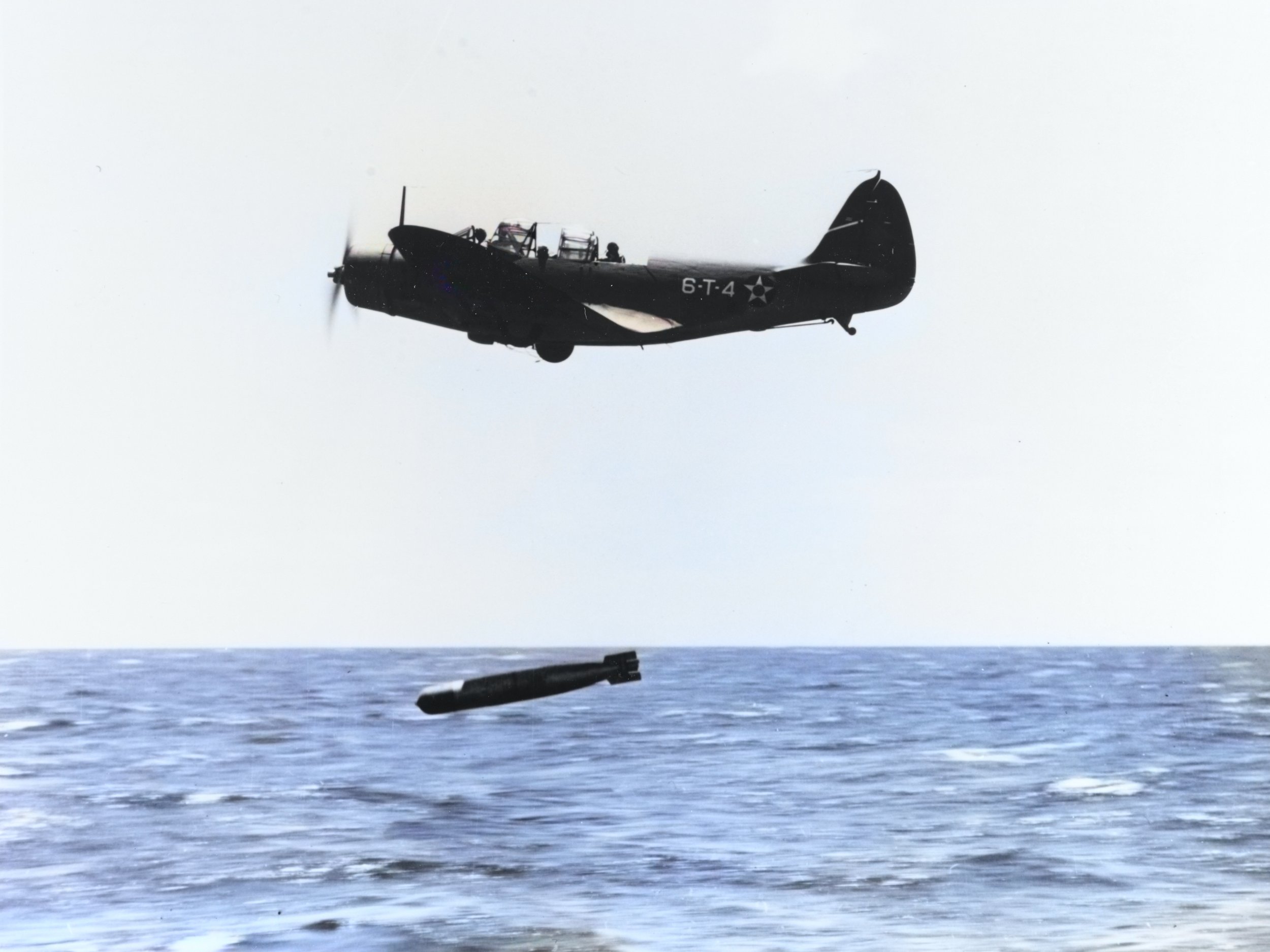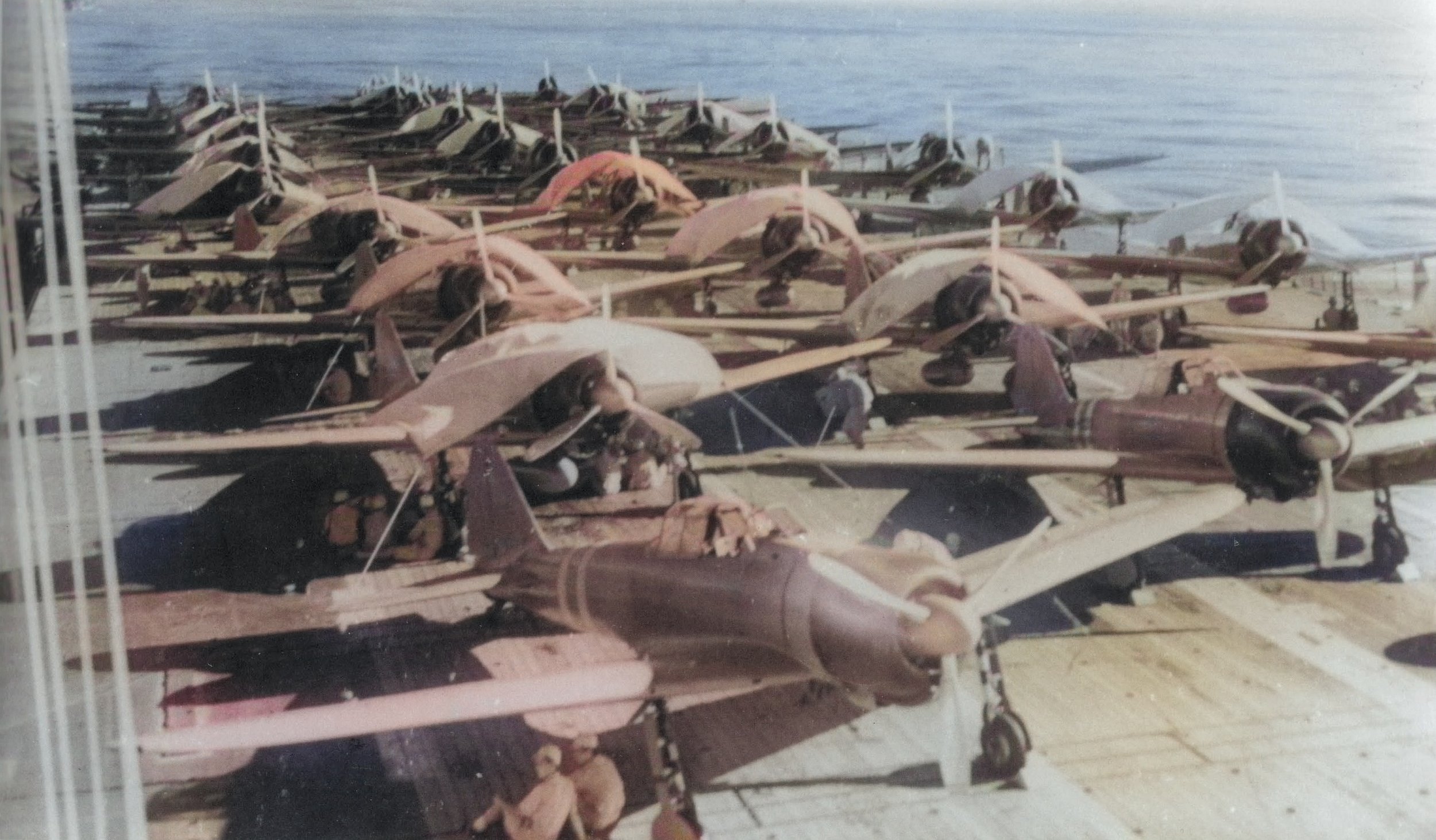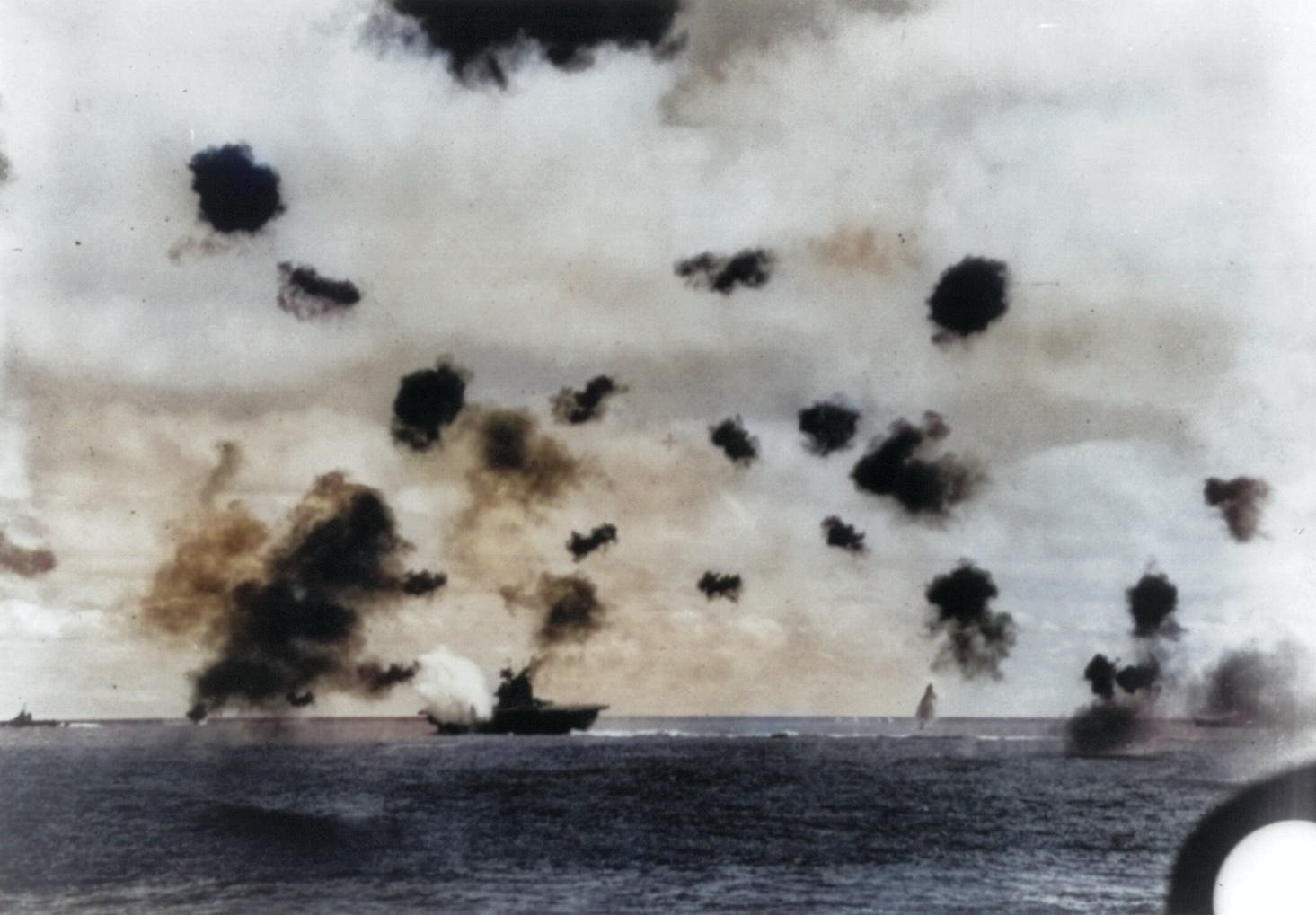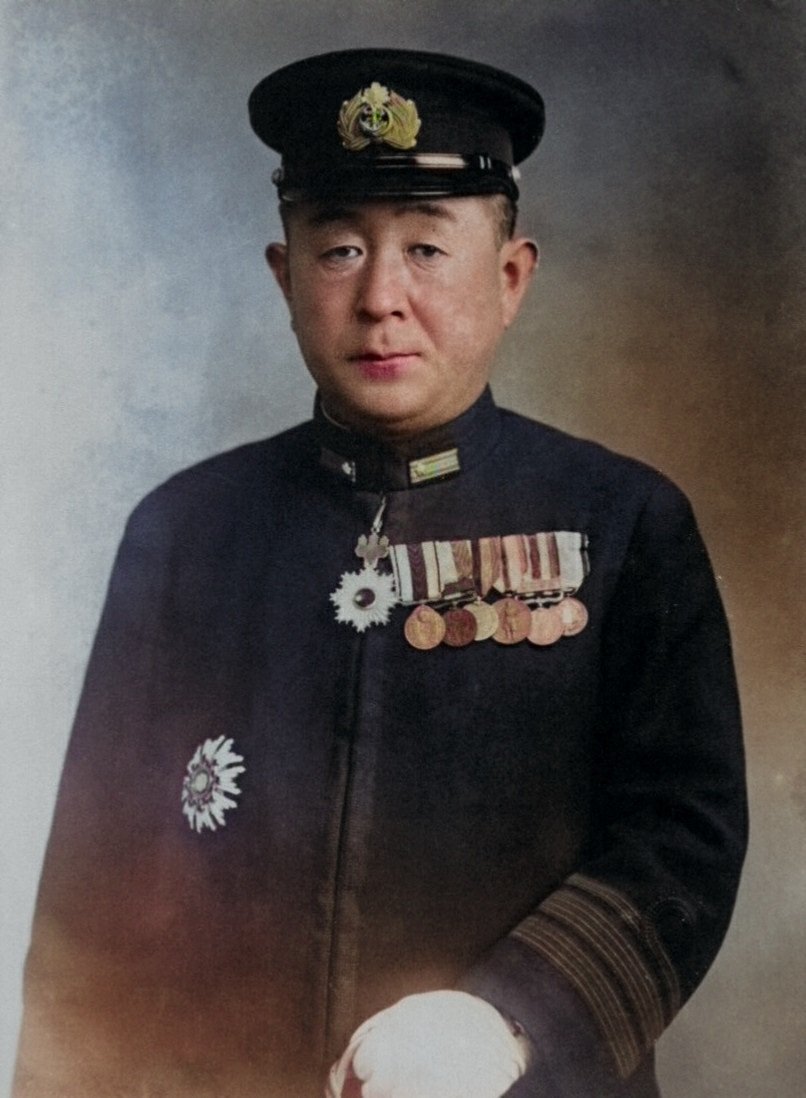The Battle of Midway
Chapter 17
“Pearl Harbor has now been partially avenged.”
In late May of 1942, still reeling from the Battle of the Coral Sea, the codebreakers of the US Navy’s Station HYPO intelligence unit at Pearl Harbor had deduced that the target of the next major Japanese operation, codenamed “AF”, was Midway Atoll. Technically a part of the Hawaiian chain, Midway was located over 1,000 miles from Honolulu, and was home to a US Naval Air Station and little else, and was strategically positioned midway between Asia and North America in the Pacific. Its capture by the Japanese could allow them to strike at Hawaii proper with land based bombers, and even potentially stage a land invasion of the islands. Armed with this knowledge, as well as a complete list of the Japanese fleet slated for the operation, Admiral Chester Nimitz, Commander in Chief of the US Pacific Fleet, made the call to deploy every carrier he had available to ambush the IJN as they moved against Midway.
USS Yorktown laid up at Pearl Harbor after being damaged in the Coral Sea
At this point, following the loss of the USS Lexington in the Coral Sea, the US Navy mustered only two fully operational carriers in the Pacific; the USS Enterprise and USS Hornet, both under the command of Admiral William “Bull” Halsey, which had recently been recalled from the South Pacific, as well as two more in drydock. The USS Yorktown had suffered damage in the Coral Sea and was under repair at Pearl Harbor, although the yard reported that she could be made battle ready within 72 hours if needed. The other, the USS Saratoga, was under repair at the Puget Sound Navy Yard, and could not be made ready in time. She did, however, donate some of her aircraft to replace losses to Yorktown’s complement.
USS Hornet underway
On 28 May, 1942 Enterprise and Hornet sortied out to their stand-by positions near Midway to await the coming of the Japanese, which HYPO had predicted would occur on or around 4 June. Yorktown sortied out two days later, with some repair crews remaining aboard to complete repair work. This force was under the command of Rear Admiral Frank Fletcher, who had replaced Admiral Halsey after he was ordered to remain behind in Hawaii by Nimitz due to medical problems. In total, by 4 June the US mustered a fleet of three carriers, eight cruisers, fifteen destroyers and sixteen submarines at Midway, bolstered by 127 aircraft from the US Navy, US Marines, and US Army Air Force on the island itself.
Admiral Yamamoto on the bridge
The IJN Combined Fleet, under the command of Admiral Isoroku Yamamoto, referred to the plan to take Midway as Operation MI, and was, from his perspective, made from a position of complete naval supremacy. Yamamoto believed that the USS Yorktown had been lost, or at least put completely out of action, at the Coral Sea, meaning that his force of four carriers was double the size of the American fleet, in addition to the near complete lack of US battleships in the theater to match the big guns of the IJN. Knowing of the proximity to Pearl Harbor, Yamamoto knew that he must expect a counterattack, and to that end he positioned his battleships several hundred miles behind the carriers, intending for the aircraft to cripple the responding American fleet before the battlefleet closed to finish them off in a traditional gun battle. Furthermore, IJN elements under Yamamoto’s command had been sent north to support the Imperial Japanese Army in its invasion of the Aleutian Islands of Alaska, hoping to draw American attention northward.
With 53 warships, the fleet sailing for Midway was massive, and was divided into three seperate groups. The First Fleet, under Yamamoto’s personal command consisted of three battleships, one light carrier, two seaplane tenders and nine destroyers, which was to hold in reserve to destroy the American fleet when it intervened. Yamamoto had his flag for command of the battle aboard the massive battleship Yamato, the largest and most powerful in the world. The First Carrier Striking Fleet, or Kido Butai, was under the command of Admiral Chuichi Nagumo, and was to bear the brunt of the battle. Its centerpiece was four fleet carriers; the Akagi (serving as Nagumo’s flagship), Kaga, Soryu and Hiryu. In support were two heavy cruisers, two battleships and eight destroyers. Lastly, the Second Fleet under Nobutake Kondo consisted of the invasion force and its support force, a fleet of four cruisers and two destroyers under the command of Admiral Takeo Kurita.
The Japanese carrier Hiryu takes evasive action as USAAF bombers attack
The Americans were the first to spot their enemy, with a PBY flying patrol from Midway spotting Japanese ships on the morning of 3 June, prompting an attack by US Army Air Force B17 heavy bombers which inflicted no damage. The next day, the Japanese struck in the early morning hours, with Nagumo’s carriers launching a strike on Midway, coincidentally at the same time that US aircraft were launched from USS Yorktown to find the location of the Japanese force. A hour later, a PBY spotted the Nagumo’s carrier force, and they vectored in a strike from the island itself, with US Army Air Force B26 medium bombers joining the brand new Grumman TBF Avenger torpedo bombers in the first strike of the day. This encountered no success against the Japanese ships, while incurring several losses. One B26, damaged by enemy fire, attempted to crash into the bridge of the carrier Akagi, missing and crashing into the sea nearby.
A US Army Air Force B26b medium bomber
The Japanese strike on the island fared little better. Intercepted by US Marine fighters and encountering significant anti-aircraft fire, they failed to neutralize the airfield or a meaningful amount of the ground based defenses. Further attacks by both US Navy and US Army bombers wound continue against the Japanese as the morning progressed, along with an attempted attack by the submarine USS Nautilus, which managed to infiltrate the Japanese battlegroup.
US Marines firing an M1917 machine gun at enemy aircraft attacking Midway
At approximately 7:30 in the morning a Japanese scout plane spotted the approaching American fleet, reporting enemy surface ships, but neglecting to note they were carriers. This did not concern Admiral Nagumo unduly, and he continued to prepare his next wave for another attack on the island, equipped with ground attack bombs. It was not until the Japanese were about to launch that second wave that information reached Nagumo aboard Akagi that enemy carriers were in the area. The Admiral thus made what would prove to be the most consequential decision of the battle, and perhaps even the Pacific War.
A TBD Devastator is brought up onto the deck of USS Enterprise
Aware now of the threat of US carriers. the Japanese moved to bring the second wave back below deck to be rearmed with naval ordinance, as the returning bombers from the first wave, along with the patrolling Zero fighters, were recovered for refueling and rearming, the frantic operations leaving ordinance scattered around the hangers. despite this, it was far too late. The Americans had launched their planes well before the fleet was spotted, and the first, a flight of TBD Devastator torpedo bombers from USS Hornet, arrived and commenced their low level attack on the Japanese carriers. Joined by additional Devastators from USS Enterprise, they were both without escort after their Wildcat fighters had run low on fuel, and flew into a maelstrom of anti-aircraft fire, along with the remaining airborne Zeros. All 15 were shot down without hitting enemy ships, and only one of the thirty men in the flight survived to be rescued from the sea. Another attack followed shortly afterward by Devastators from Enterprise and Yorktown also met no results, although some were able to return to their carriers. The performance here would be the death knell for the aging Devastator in combat, although problems remained with the American torpedoes as well.
Admiral Chuichi Nagumo
As the remaining Zeros, by now low on fuel and ammunition, flew to intercept the last group of Devastators inbound from Yorktown, a group of SBD Dauntless dive bombers from Enterprise and Yorktown were arriving overhead, unbeknownst to the Japanese. The bombers from Enterprise had almost lost the position of the enemy, but had managed to follow the destroyer Arashi, which was returning to the fleet after attempting the sink the submarine Nautilus earlier in the day. With three squadrons of bombers arriving from different angles simultaneously, the set-up for the attack was as near perfect as possible.
A TBD Devastator from USS Enterprise drops its torpedo
Almost all aircraft from Enterprise dove on the Kaga, with 25 in total attacking the carrier. A single 1,000 pound bomb penetrated the flight deck and exploded in the ship’s hangar, where various bombs and torpedoes were strewn about from the attempted rearmament, and fuel lines were open to prepare the planned strike. Additional 500 pound bombs hit the carrier in the hangar, aircraft elevator, and the bridge. The last of those killed the entire command crew, while the hits to the hangar detonated both the ordinance and fuel lines, destroying the ships Co2 fire control systems. The hull around the hangars were blown out, and the entire ship was soon engulfed in flames as blazing aviation fuel spread from the ruptured tanks and lines.
SBD Dauntless dive bombers over the Japanese fleet
Seeing that Kaga was doomed, three Dauntlesses split off to attack Nagumo’s flagship, the Akagi. This group, led by Lt. Richard Best, missed with its first two bombs, but a third struck home, penetrating near the aircraft elevator and detonating amongst the B5N Kate torpedo bombers being readied in the hangar.
A view of the flight deck of the Japanese carrier Akagi as seen from a departing aircraft
The result was very similar to the hit on the Kaga, with the bomb setting a series of catastrophic secondary explosions within as ordinance and fuel detonated. In addition, one of the misses detonated in the water just astern, causing damage to the rudder and leaving the carrier unable to properly maneuver, as well as warping the flight deck with the geyser of water produced.
A6M Zeros aboard a Japanese carrier
Finally, additional Dauntlesses from Yorktown attacked Soryu, hitter her with three 1,000 pound bombs. Again the hangars were penetrated, this time with all three, again causing massive explosions. Aircraft ready on the decks of all three carriers were also caught in the blasts, exploding as well to add to the carnage. The Americans had taken a mere six minutes to destroy 75% of the Japanese carrier force, with only the Hiryu having escaped damage.
An F4F Wildcat fighter takes off from USS Hornet
The destruction of the three carriers left Nagumo in a state of shock, and it took some time for him to regain composure. When he did, he ordered a counterattack to be launched by Hiryu as soon as he arrived aboard the cruiser Nagara (having been forced to abandon the blazing Akagi). Following the retreating US aircraft, the Japanese found and set upon the USS Yorktown and her battlegroup with a flight of D3A Val dive bombers, which scored three hits on the American carrier. Despite hits penetrating the hangars, the ship had, unlike her Japanese counterparts, prepared for the attack by securing ordinance and clearing fuel lines, and the resulting fires were relatively small and quickly contained. Another hit, dropping down the smokestack, managed to destroy several boilers and leave Yorktown almost dead in the water.
USS Yorktown takes a hit amidships from a Japanese torpedo
The ship was only immobile for an hour, as crews were able to keep one boiler running and used that to jump-start the others, and the holes in the deck were quickly patched. Captain Elliot Buckmaster, the skipper of the carrier, ordered a new, 10x15 foot US flag to be hoisted from the mainmast, to the cheers of her crew. But the ordeal was not yet over. Just as preparations to launch more fighters commenced, another Japanese strike was detected.
“For the first time I realized what the flag meant: all of us — a million faces — all our effort — a whisper of encouragement”
The force, consisting this time of B5N Kate torpedo bombers again set upon the Yorktown, having misidentified it as another carrier due to its lack of visible damage (the first attack force had reported the destruction of the carrier). the carrier was able to dodge several torpedoes as her Wildcats engaged the Japanese planes, but eventually two torpedoes found their mark. Again losing all power, Yorktown took on a severe list and her rudder jammed, keaving the carrier out of action and in danger of sinking. As the list worsened, Captain Buckmaster gave the order to abandon ship.
USS Yorktown burns and takes on a list as she starts to founder
Despite the loss of Yorktown, the Americans were not yet done with the battle. A scout from the stricken ship had spotted the last Japanese carrier, Hiryu, which was now attempting to withdraw after recovering her surviving aircraft. At 1700, the Americans attacked the Hiryu with dive bombers, scoring hits with four 1,000 pound bombs. Again fires were started in the hangars (albeit not as severe as those on other IJN carriers that day), and one hit sent the forward aircraft elevator flying upward to land ahead of the island, jutting skyward. As the fires quickly grew out of control, the ship was eventually ordered to be abandoned.
The Japanese carrier Hiryu burns, with her forward flight deck devastated. The structure that appears to be a smokestack to the right of the island is actually her forward elevator, thrown there by the explosion.
In one single day, the course of the Pacific War had been altered irrevocably. All four carriers of the IJN First Air Fleet had been destroyed, with the loss of only one of the three carriers left to the United States Navy. The blazing wrecks of Kaga, Akagi, Soryu and Hiryu were al scuttled by Japanese destroyers later in the evening, with Admiral Tamon Yamaguchi, the commander of the 2nd Carrier Division (Hiryu and Soryu) choosing to go down with his flagship, Hiryu.
Admiral Tamon Yamaguchi, who went down with the carrier Hiryu
Yamamoto was determined to avenge his carriers, and intended to attack the US fleet with his powerful battleships in the night. Despite being unaware of this threat by the Japanese battleships, Admiral Spruance pulled his carriers back to defend Midway Island from a possible Japanese strike, inadvertently keeping them far from Yamamoto’s big guns, and as the risk of his force being caught in the daylight with no air cover grew Yamamoto was forced to concede defeat and retire his forces.
The Battle of Midway was both the first major Allied victory of the Pacific War and perhaps its most decisive. The Americans had lost the USS Yorktown, but the loss of the four Japanese carriers would prove far more significant, as the Japanese were unable to replace warship losses. The initative had been lost, and soon the Americans would be able to launch their own counteroffensives against the Japanese in the Pacific.






